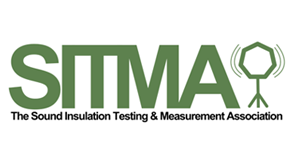Offices Nationwide

Sound Levels
Decibels (dB) are most commonly used as a measure of sound level, but they are also used in electronics, signals and communications.
Sound is a variation in pressure detectable by the ear, whereas noise is undesired sound, or any sound which causes disturbance or annoyance to the recipient. The unit used to describe sound wave intensity is the bel, named after the inventor Alexander Graham Bell. The human ear is sensitive enough to detect changes of as little as 1/10 of a bel, and so sound intensity levels are described in decibels.
A sound wave’s intensity is the average amount of energy transmitted per unit time through a unit area in a specified direction. The sound intensity level, I, in decibels is 10 times the logarithm of the ratio of the intensity of a sound wave to a reference intensity.



Sound Insulation
Two parameters are used to describe the sound insulation of a partition, Dw and Rw. Dw represents the sound insulation between rooms on-site. Since these figures describe the fnal site requirements, Dw levels are specified by clients and Building Regulations. Rw represents the lab tested sound insulation of an element making up a partition wall/floor type. Due to flanking and other factors, lab rated sound reduction levels will not be achieved on-site. Conventionally, there is a 5 to 10 dB reduction between a Rw lab tested figure and an on-site Dw figure. The conversion between Dw and Rw is relatively complex and takes into consideration receiver room volume, receiver room reverberation times and the area of the separating partition. The conversion between Rw and Dw should always be calculated.



Environmental Noise Levels
According to the National Institute for Occupational Safety and Health, the maximum exposure time at 85 dBA is eight hours.
At 110 dBA, the maximum exposure time is one minute and 29 seconds. If you must be exposed to noise, it is recommended that you limit the exposure time and/or wear hearing protection.
A three dBA increase doubles the amount of noise, and halves the recommended amount of exposure time.



Sound Absorption
The loss of sound energy when sound waves come into contact with an absorbent material such as ceilings, walls, floors and other objects.


Copyright 2025 E2 Specialist Consultants Limited
Company No. 06728970

































